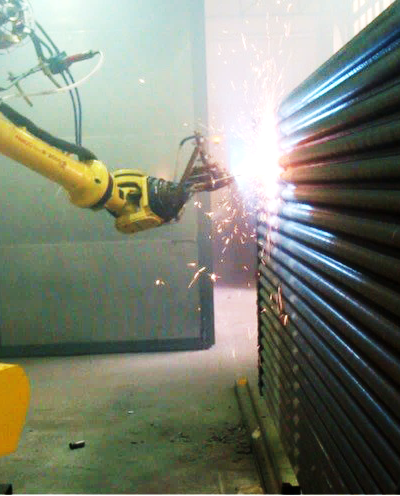


Arc spray is a process where the source of heat is an electric arc between two wires, which at the same time are the coating material. As a result of arcing, the filler melts and is transferred by a stream of compressed air towards the element. The most common materials sprayed using this method are:
In the case of plasma spray, the source of heat is a plasma arc between tungsten anode and cathode, which is a stream of highly ionized gas. The material in powder form s fed directly into the stream of hot plasma, where it is melted, and the inert gas stream causes the material particles to move towards the substrate. Due to the very high temperature of the ionized gas stream, this process is suitable for applying ceramic coatings, refractory carbide layers, as well as other thermally sprayed alloys.
Supersonic high velocity oxy-fuel flame spraying is carried out at particle velocities of Mach 1-3.5. The source of heat in this process is mixture of oxygen and aircraft fuel burned in the combustion chamber of the gun, and the filler in powder form is delivered directly to the nozzle behind the combustion chamber, where it is fused in the stream of exhaust gases and accelerated to supersonic velocities. Coating particles are "hammered" into the substrate. The coating applies with the HVOF process is characterized by minimum porosity, compact and homogeneous structure, uniform particle distribution, and high adhesion to the substrate, often exceeding 80 MPa. The sprayed element is not subject to deformation during the spraying process due to a significantly reduced impact of the heat. Materials sprayed supersonically include:
Flame spraying involves melting the filler with acetylene-oxygen flame. Filler may be fed by gravitation from a tray (in powder form) or from a feeder (in wire form). The coatings are characterized by good adhesion to the substrate, low level of inclusions in the coating, and a compact structure. The most common flame sprayed coatings are:


Sign up for our newsletter!
We’ll let you know about new products/services and other important updates.